The Polyurea market is expected to grow from USD 915 Million in 2020 to USD 1426.91 Million by 2028, at a CAGR of 5.7% during the forecast period 2021-2028.
Polyurea is a kind of elastomer created by step-growth polymerization of an isocyanate component and a synthetic resin mix component. Polyurea compounds are utilized as sealants, coatings, and lining solutions to provide excellent thermal stability, pigment combability, quick curing time, and water resistance. This product has a wide range of uses in the transportation, construction, and other industrial sectors. End-users choose this product because it is environmentally benign and meets the standards set by authorities monitoring the impact of volatile organic compounds on the environment (VOCs).
Increasing use of Protective coatings' in automotive and construction applications due to their rust resistance and excellent durability boosts the market for polyurea consumption. Because of its exceptional grip to clean surfaces including wood, concrete, bitumen, and blasted steel, polyurea is used in adhesive and sealant compositions. Increased use of adhesives and sealants as bonding agents in the automotive and construction sectors have contributed significantly to industry growth. The transportation and construction sectors have expanded their application reach as a result of growing urbanization. In the construction and automotive sectors, polyurea solutions are frequently used to repair tunnels and bridges, build highways and roads, and cover vehicles. The rapid increase in infrastructure investment and the emphasis on public transportation, subway development, and urbanization have created favorable conditions for the polyurea industry to flourish. However, cheaper alternatives to polyurea, such as epoxy, are available on the market, limiting market expansion. The rising popularity of environmentally friendly goods and improvements in coating technologies and applications are expected to provide profitable opportunities available for market growth.
This study delivers a comprehensive analysis of product, application, and region. Based on the product, the Polyurea Market is segmented into Coating, Lining, and Adhesives & Sealants. The coating segment dominated the market with the largest market share in 2020. Coating formulations are utilized in the construction, automotive, and healthcare industries because they have beneficial qualities, including corrosion resistance, abrasion resistance, waterproofing, and structural improvement. Also, because of their strong chemical resistance to liquids and quick-drying finishes, they are commonly utilized in landfills and waterproofing systems. The increasing relevance of waterproofing membranes in the building sector due to their excellent sealing properties boosts the market growth. Based on the application, the polyuria market is segmented into Construction, Industrial, and Transportation. The construction segment dominated the market with the largest market share in 2020. Polyurea is widely utilized in the construction and building sector. Bridge-building, commercial architecture, floor and roof coatings, caulks, joint fill, parking decks, concrete restoration, and structural bonding are among the applications. Polyurea coatings aid in meeting the performance needs of specific building projects. Crack-bridging, increasing tensile and compressive strength, waterproofing, offering corrosion, chemical, and water resistance, and enhancing other mechanical characteristics of a structure are all possible with these coatings.
The market has been divided into North America, Europe, Asia-Pacific, Middle East & Africa, and South America. The North American region dominated the market with the largest market share in 2020. The polyurea industry is growing owing to rising building investment in North America. Because of its flexibility, resistance, and environmental properties, government authorities have approved the use of polyurea roofing membranes for waterproofing applications. Pure polyurea also serves an essential function in limiting the growth of microorganisms in wall cavities, making maintenance easier. Because of this, it may be used as a single surface covering between the walls and the floors. The presence of a strong automobile manufacturing base in the United States and Mexico is likely to continue to be a positive driver for market expansion. Furthermore, polyuria usage in the form of adhesives and coatings is rising in the United States as infrastructure improves due to an increase in the number of residential constructions. The Asia Pacific region is growing with the highest CAGR. In the coming years, it is expected to have the highest market share due to the region's developing construction industry.
Some of the key players operating in the global market are Specialty Products Inc., VersaFlex Inc, BASF, Nukote Coating Systems and International, BAYER AG, Huntsman Corporation, Alberts Spray Solutions, SWD Urethane, W.R. Grace & Co. and PPG.
Polyurea Market Analysis and Forecast, Product
Polyurea Market Analysis and Forecast, Application
Polyurea Market Analysis and Forecast, Region
Report Description:
1. Introduction
1.1. Objectives of the Study
1.2. Market Definition
1.3. Research Scope
1.4. Currency
1.5. Key Target Audience
2. Research Methodology and Assumptions
3. Executive Summary
4. Premium Insights
4.1. Porter’s Five Forces Analysis
4.2. Value Chain Analysis
4.3. Top Investment Pockets
4.3.1. Market Attractiveness Analysis By Product
4.3.2. Market Attractiveness Analysis By Application
4.3.3. Market Attractiveness Analysis By Region
4.4. Industry Trends
5. Market Dynamics
5.1. Market Evaluation
5.2. Drivers
5.2.1. Rapid urbanisation and modernisation.
5.2.2. Rapidly increasing construction and infrastructure development.
5.3. Restrains
5.3.1. Availability of cheaper alternatives.
5.4. Opportunities
5.4.1. Improvements in coating technologies and applications.
5.4.2. Rising market for eco-friendly products.
6. Global Polyurea Market Analysis and Forecast, By Product
6.1. Segment Overview
6.2. Coating
6.3. Lining
6.4. Adhesives & Sealants
7. Global Polyurea Market Analysis and Forecast, By Application
7.1. Segment Overview
7.2. Construction
7.3. Industrial
7.4. Transportation
8. Global Polyurea Market Analysis and Forecast, By Regional Analysis
8.1. Segment Overview
8.2. North America
8.2.1. U.S.
8.2.2. Canada
8.2.3. Mexico
8.3. Europe
8.3.1. Germany
8.3.2. France
8.3.3. U.K.
8.3.4. Italy
8.3.5. Spain
8.4. Asia-Pacific
8.4.1. Japan
8.4.2. China
8.4.3. India
8.5. South America
8.5.1. Brazil
8.6. Middle East and Africa
8.6.1. UAE
8.6.2. South Africa
9. Global Polyurea Market-Competitive Landscape
9.1. Overview
9.2. Market Share of Key Players in Global Polyurea Market
9.2.1. Global Company Market Share
9.2.2. North America Company Market Share
9.2.3. Europe Company Market Share
9.2.4. APAC Company Market Share
9.3. Competitive Situations and Trends
9.3.1. Product Launches and Developments
9.3.2. Partnerships, Collaborations, and Agreements
9.3.3. Mergers & Acquisitions
9.3.4. Expansions
10. Company Profiles
10.1. Specialty Products Inc.
10.1.1. Business Overview
10.1.2. Company Snapshot
10.1.3. Company Market Share Analysis
10.1.4. Company Product Portfolio
10.1.5. Recent Developments
10.1.6. SWOT Analysis
10.2. VersaFlex Inc,
10.2.1. Business Overview
10.2.2. Company Snapshot
10.2.3. Company Market Share Analysis
10.2.4. Company Product Portfolio
10.2.5. Recent Developments
10.2.6. SWOT Analysis
10.3. BASF
10.3.1. Business Overview
10.3.2. Company Snapshot
10.3.3. Company Market Share Analysis
10.3.4. Company Product Portfolio
10.3.5. Recent Developments
10.3.6. SWOT Analysis
10.4. Nukote Coating Systems and International
10.4.1. Business Overview
10.4.2. Company Snapshot
10.4.3. Company Market Share Analysis
10.4.4. Company Product Portfolio
10.4.5. Recent Developments
10.4.6. SWOT Analysis
10.5. BAYER AG
10.5.1. Business Overview
10.5.2. Company Snapshot
10.5.3. Company Market Share Analysis
10.5.4. Company Product Portfolio
10.5.5. Recent Developments
10.5.6. SWOT Analysis
10.6. Huntsman Corporation
10.6.1. Business Overview
10.6.2. Company Snapshot
10.6.3. Company Market Share Analysis
10.6.4. Company Product Portfolio
10.6.5. Recent Developments
10.6.6. SWOT Analysis
10.7. Alberts Spray Solutions
10.7.1. Business Overview
10.7.2. Company Snapshot
10.7.3. Company Market Share Analysis
10.7.4. Company Product Portfolio
10.7.5. Recent Developments
10.7.6. SWOT Analysis
10.8. SWD Urethane
10.8.1. Business Overview
10.8.2. Company Snapshot
10.8.3. Company Market Share Analysis
10.8.4. Company Product Portfolio
10.8.5. Recent Developments
10.8.6. SWOT Analysis
10.9. W.R. Grace & Co.
10.9.1. Business Overview
10.9.2. Company Snapshot
10.9.3. Company Market Share Analysis
10.9.4. Company Product Portfolio
10.9.5. Recent Developments
10.9.6. SWOT Analysis
10.10. PPG
10.10.1. Business Overview
10.10.2. Company Snapshot
10.10.3. Company Market Share Analysis
10.10.4. Company Product Portfolio
10.10.5. Recent Developments
10.10.6. SWOT Analysis
List of Tables
1. Global Polyurea Market, By Product, 2018-2028 (USD Million)
2. Global Coating Market, By region, 2018-2028 (USD Million)
3. Global Lining Market, By region, 2018-2028 (USD Million)
4. Global Adhesives & Sealants Market, By Region, 2018-2028 (USD Million)
5. Global Polyurea Market, By Application, 2018-2028 (USD Million)
6. Global Construction Market, By region, 2018-2028 (USD Million)
7. Global Industrial Market, By region, 2018-2028 (USD Million)
8. Global Transportation Market, By region, 2018-2028 (USD Million)
9. North America Polyurea Market, By Product, 2018-2028 (USD Million)
10. North America Polyurea Market, By Application, 2018-2028 (USD Million)
11. USA Polyurea Market, By Product, 2018-2028 (USD Million)
12. USA Polyurea Market, By Application, 2018-2028 (USD Million).
13. Canada Polyurea Market, By Product, 2018-2028 (USD Million)
14. Canada Polyurea Market, By Application, 2018-2028 (USD Million)
15. Mexico Polyurea Market, By Product, 2018-2028 (USD Million)
16. Mexico Polyurea Market, By Application, 2018-2028 (USD Million)
17. Europe Polyurea Market, By Product, 2018-2028 (USD Million)
18. Europe Polyurea Market, By Application, 2018-2028 (USD Million)
19. Germany Polyurea Market, By Product, 2018-2028 (USD Million)
20. Germany Polyurea Market, By Application, 2018-2028 (USD Million)
21. France Polyurea Market, By Product, 2018-2028 (USD Million)
22. France Polyurea Market, By Application, 2018-2028 (USD Million)
23. U.K. Polyurea Market, By Product, 2018-2028 (USD Million)
24. U.K. Polyurea Market, By Application, 2018-2028 (USD Million)
25. Italy Polyurea Market, By Product, 2018-2028 (USD Million)
26. Italy Polyurea Market, By Application, 2018-2028 (USD Million)
27. Spain Polyurea Market, By Product, 2018-2028 (USD Million)
28. Spain Polyurea Market, By Application, 2018-2028 (USD Million)
29. Asia Pacific Polyurea Market, By Product, 2018-2028 (USD Million)
30. Asia Pacific Polyurea Market, By Application, 2018-2028 (USD Million)
31. Japan Polyurea Market, By Product, 2018-2028 (USD Million)
32. Japan Polyurea Market, By Application, 2018-2028 (USD Million)
33. China Polyurea Market, By Product, 2018-2028 (USD Million)
34. China Polyurea Market, By Application, 2018-2028 (USD Million)
35. India Polyurea Market, By Product, 2018-2028 (USD Million)
36. India Polyurea Market, By Application, 2018-2028 (USD Million)
37. South America Polyurea Market, By Product, 2018-2028 (USD Million)
38. South America Polyurea Market, By Application, 2018-2028 (USD Million)
39. Brazil Polyurea Market, By Product , 2018-2028 (USD Million)
40. Brazil Polyurea Market, By Application, 2018-2028 (USD Million)
41. Middle East and Africa Polyurea Market, By Product, 2018-2028 (USD Million)
42. Middle East and Africa Polyurea Market, By Application, 2018-2028 (USD Million)
43. U.A.E. Polyurea Market, By Product, 2018-2028 (USD Million)
44. U.A.E. Polyurea Market, By Application, 2018-2028 (USD Million)
45. South Africa Polyurea Market, By Product, 2018-2028 (USD Million)
46. South Africa Polyurea Market, By Application, 2018-2028 (USD Million)
List of Figures
1. Global Polyurea Market Segmentation
2. Global Polyurea Market: Research Methodology
3. Market Size Estimation Methodology: Bottom-Up Approach
4. Market Size Estimation Methodology: Top-Down Approach
5. Data Triangulation
6. Porter’s Five Forces Analysis
7. Value Chain Analysis
8. Global Polyurea Market Attractiveness Analysis By Product
9. Global Polyurea Market Attractiveness Analysis By Application.
10. Global Polyurea Market Attractiveness Analysis By Region
11. Global Polyurea Market: Dynamics
12. Global Polyurea Market Share by Product (2021 & 2028)
13. Global Polyurea Market Share by Application (2021 & 2028)
14. Global Polyurea Market Share by Region (2021 & 2028)
15. Global Polyurea Market Share by Company (2020)
Market research is a method of gathering, assessing and deducing data & information about a particular market. Market research is very crucial in these days. The techniques analyze about how a product/service can be offered to the market to its end-customers, observe the impact of that product/service based on the past customer experiences, and cater their needs and demands. Owing to the successful business ventures, accurate, relevant and thorough information is the base for all the organizations because market research report/study offers specific market related data & information about the industry growth prospects, perspective of the existing customers, and the overall market scenario prevailed in past, ongoing present and developing future. It allows the stakeholders and investors to determine the probability of a business before committing substantial resources to the venture. Market research helps in solving the marketing issues challenges that a business will most likely face.
Market research is valuable because of the following reasons:
Our research report features both the aspects; qualitative and quantitative. Qualitative part provides insights about the market driving forces, potential opportunities, customer’s demands and requirement which in turn help the companies to come up with new strategies in order to survive in the long run competition. The quantitative segment offers the most credible information related to the industry. Based on the data gathering, we use to derive the market size and estimate their future growth prospects on the basis of global, region and country.
Our market research process involves with the four specific stages.

Data Collection: This stage of the market research process involves with the gathering and collecting of the market/industry related data from the sources. There are basically two types of research methods:
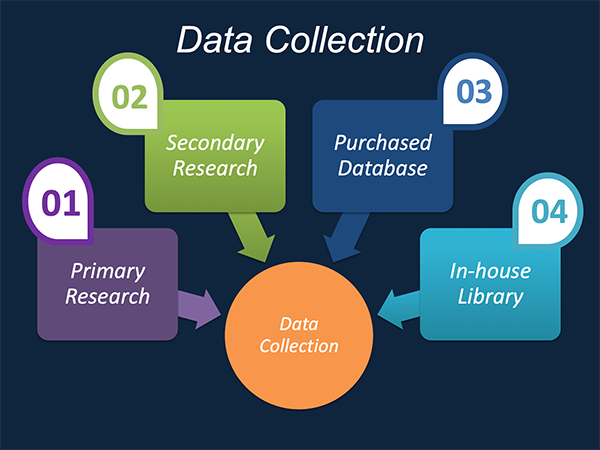
Data Synthesis: This stage includes the evaluation and assessment of all the data acquired from the primary and secondary research. It likewise includes in evaluating the information for any disparity watched while information gathering identified with the market. The data & information is gathered with consideration to the heterogeneity of sources. Scientific and statistical methods are implemented for synthesizing dissimilar information sets and provide the relevant data which is fundamental for formulating strategies. Our organization has broad involvement with information amalgamation where the information goes through different stages:


Market Formulation & Deduction: The last stage includes assigning the data & information in a suitable way in order to derive market size. Analyst reviews and domain based opinions based on holistic approach of market estimation combined with industry investigation additionally features a crucial role in this stage.
This stage includes with the finalization of the market size and numbers that we have gathered from primary and secondary research. With the data & information addition, we ensure that there is no gap in the market information. Market trend analysis is finished by our analysts by utilizing data extrapolation procedures, which give the most ideal figures to the market.
Data Validation: Validation is the most crucial step in the process. Validation & re-validation through scientifically designed technique and process that helps us finalize data-points to be used for final calculations. This stage also involves with the data triangulation process. Data triangulation generally implicates the cross validation and matching the data which has been collected from primary and secondary research methods.





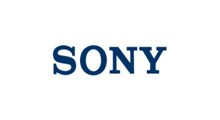

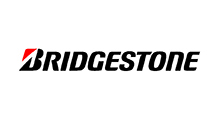

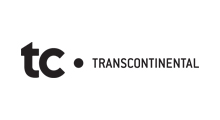















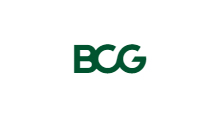


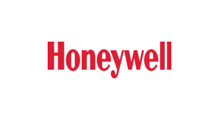

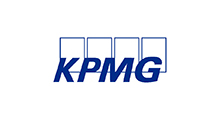
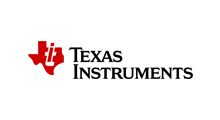



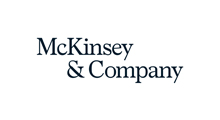

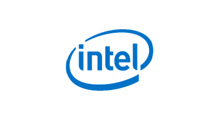







Free Customization
Countries can be added on demand
Free yearly update on purchase of Multi/Corporate User License
Companies served till date

We serve our customers 24x7 for 365 days through calls, emails and live chat options.

Huge database of exceptional market reports bringing market intelligence to your fingertips.

SSL enabled, we offer you various secured payment options for risk free purchase.